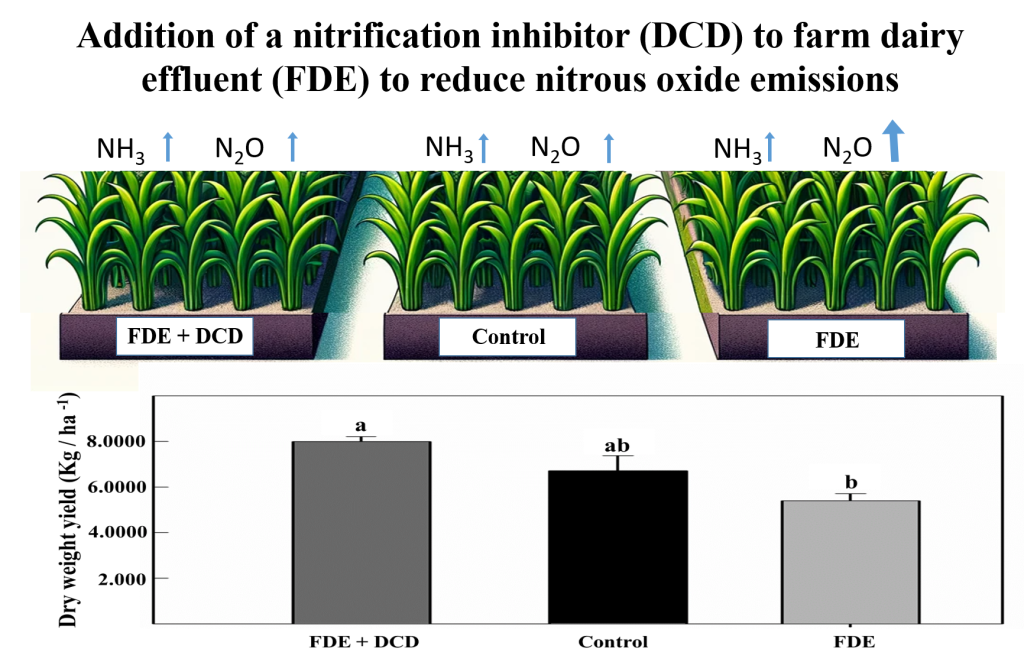Nitrification inhibitor addition to farm dairy effluent to reduce nitrous oxide emissions
11/Mar/2024
ABSTRACT Increasing the use of nitrogen (N) fertilizers will be necessary to enhance grain and pasture yields to satisfy the growing world demand for food. Organic amendments, such as farm dairy effluents (FDE), are an alternative to traditional synthetic fertilizers. However, part of the applied N could be lost as ammonia (NH3) volatilization or nitrous oxide (N2O) emission, decreasing N availability to plants. Nitrification inhibitors, such as dicyandiamide (DCD), suppress the microbial process of nitrification, decreasing soil nitrate concentration and, […]
Nitrous Oxide Emissions in a Wheat/Corn Succession Combining Dairy Slurry and Urea as Nitrogen Sources
03/May/2018
ABSTRACT: The impact on nitrous oxide (N2O) emissions caused by combining dairy slurry (DS) and urea to supply crops with nitrogen (N) is still not well characterized. The main objective of this study was to compare the differences between N2O emissions in the cases of exclusive use of urea and the combined use of DS and urea as N sources to no-tillage wheat and corn. We also compared N2O emissions between two DS application methods (surface-broadcast vs. injection), as well […]

